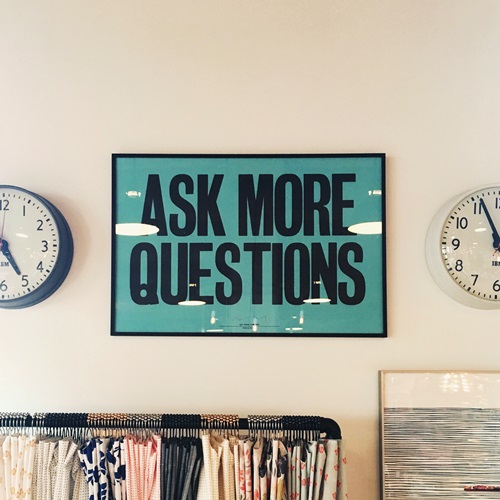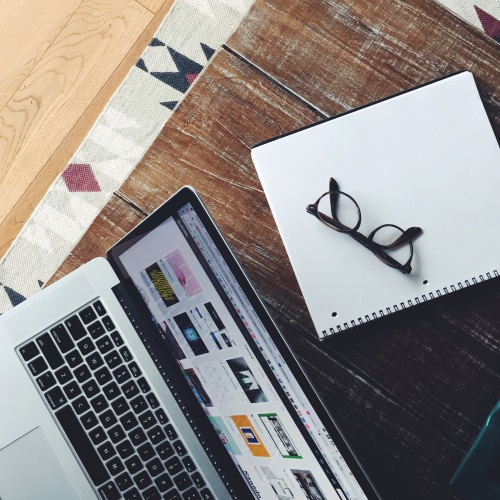Graphic Design Versus Art
Graphic design can sometimes be a misunderstood field of work. Some may be confused about the differences between graphic designers and artists, and may wonder why artists don’t just double as graphic designers. Don’t get me wrong, there are many graphic designers whose roots are in fine art, but they most likely received formal training to understand the elements and principles that make graphic design so different from art. Graphic design work can be viewed as art in itself, but what makes it different from fine art is that it always has a specific purpose. With use of carefully planned visuals and text, each graphic design project is meant to tell a specific story, evoke specific emotions, and bring about specific outcomes. It may be used with the intention of changing viewer’s perspectives, convincing consumers to buy a product, or to teach viewers a lesson, but the list of potential uses for graphic design goes on and on. Each project completed by a graphic designer requires a formal process, a strong understanding of design that comes from an adequate education, and a set of tools that make our design work possible.
Our Process

In the beginning of a project, a designer’s mission is to answer all the important questions, such as what the project objectives are and who the target audience will be.
Whether a design project is being completed for a client or as one’s own personal project, the design process begins with gathering necessary information about the project. This includes project objectives, parameters/restrictions, the project timeline, defining the target market, and any important information about the client/company, such as the company’s mission, goals, and products/services. When all the necessary information is gathered, a design brief can be put together, which summarizes the key information and objectives for a project.
The next phase of every design project is the research phase. This involves gathering information about competitors, design trends in the client’s line of work, and target market demographics such as age and lifestyle. Research helps designers gain a strong understanding of the client, the client’s competitors, and the client’s target market, and allows designers to come up with an effective design strategy (aesthetic and functional requirements for the project).
The development phase of any design project is typically the longest phase, and can involve a number of strategies for developing design concepts. Typically, designers will start this phase by brainstorming and sketching ideas, but may use a number of other strategies for coming up with ideas, such as free writing, looking for inspiration online or in the world around them, and listing words and visuals that resonate with the project. When many ideas have been formulated, designers can narrow down the ideas to the most effective ones and develop those into visually impactful designs. After all the necessary design concepts have been completed, the client will provide feedback, and revisions will be made based on client feedback. Once the design work is considered finalized, it will be taken to production, which can involve print or digital production processes (printing, web development, etc.).
Our Tools
A graphic designer’s tool kit is an ever growing assortment of software, art supplies, books, and technology that help them to tackle each design project effectively. The majority of graphic designers use Adobe software in their projects, which includes programs such as Photoshop (for photo editing and manipulation), InDesign (for creating layouts),

Among graphic designer’s most important tools are their computers and sketch books.
Illustrator (for creating vector images), and After Effects (for creating motion graphics and videos). However, designers may need additional software for various uses, such as coding websites or creating digital paintings. Designers have an assortment of sketchbooks, pens and pencils, paint and paint brushes, and other art supplies that help them create visuals, and may need to add more art supplies to their collection as each project has different demands. Technology plays an important role in design work as well, and can include computers, tablets, and digital cameras. Designers also use various resources for finding fonts, graphics, and software extensions, such as Photoshop paintbrushes.
An important part of being a graphic designer is keeping one’s knowledge of the field up to date, and being aware of past, current, and future design trends. This knowledge may be found in books, magazines, blogs, or websites with design inspiration such as Behance or Pinterest. Beyond knowledge of graphic design, designers can keep their design skills and knowledge sharp by finding inspiration in the world around them. This could involve observing beautiful or interesting things in nature, watching documentaries on various topics, traveling, and endless other activities. The more that designers are aware of the world around them, the more they can open their mind to creative thinking.
Our Education and Training
Throughout a designer’s training, graphic designers learn about the elements of a design, such as texture and color, but they also learn about how to use those elements effectively with important design principles, such as contrast and rhythm. Designers also learn about typography, graphic design history, design software, and print production, to name a few. Their knowledge gets applied to many types of design work throughout their education, such as logo design, motion graphics, web design, poster design, and packaging design. Beyond learning and practicing design skills, designers also learn to have a more efficient creative process, give and receive effective feedback on design work, and work well with a team of creatives. Completing an education in graphic design is challenging, but very rewarding and enjoyable, and adequately prepares individuals for a career in design.
Conclusion
Graphic design goes far beyond making things look beautiful or interesting. Each project is backed with knowledge and purpose, using a variety of tools and techniques to make a composition visually engaging. When a design problem is presented, a graphic designer will do everything in their power to solve that problem effectively. If you have a design problem that needs solving, whether it is the need for a well-designed business website to increase revenue and credibility, or a refreshing of your brand identity, we would be happy to help you solve that problem. Don’t hesitate to contact us if you would like to discuss your ideas for a design project.
